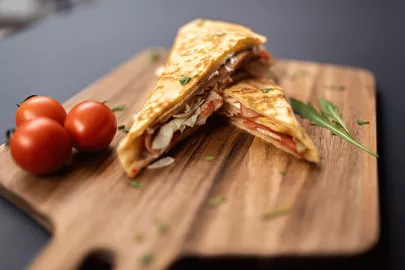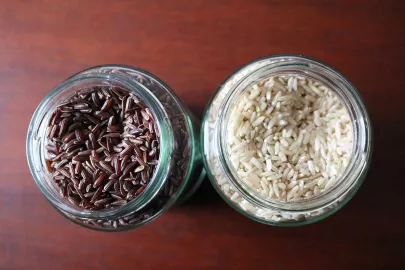On April 23, the French astronaut Thomas Pesquet flew to space with three other team members. The crew stayed at the International Space Station (ISS) for six months. In addition to their missions, their day-to-day routine revolved around their meals. We peel back the curtain on history to take a closer look.

Eating in space is anything but simple. There are countless limitations, starting with food safety. Food poisoning is the last thing you want in space! As a result, the astronauts aim for a zero-bacteria environment, which entails sterilizing and cooking food for long periods of time. Another must is to feed the crew properly by providing everyone with their necessary nutritional requirements. In other words, meals have to be hearty without being too salty or sugary. There are also practical concerns to keep in mind. When traveling through space, only heat conduction is possible. As a result, meals are packaged in cans that are heated as they're squeezed between two tongs. It's always a good idea to pack light, too. Sending just a half a pound of food into space costs $10,000! Along the same vein, you can't serve food that is too dry or too wet. Crumbs and droplets can irritate an astronaut's throat and eyes and harm the station's electrical circuits. Last but not least, astronauts lose a fair part of their sense of taste in space. That’s why it’s important to serve a more flavorful meal than normal.

© AD_CNES
But that's no reason to throw in the towel! Meals are one of rare “recreational” times in the day and are essential to the crew's well-being. In 1993, Jean-Pierre Haigneré learned this lesson the hard way. Without a proper meal selection, the French astronaut lost a few pounds during his first three-week trip aboard Mir. Ever since, the countries involved have worked to come up with a solution. France has specialized in creating the most festive space meals and has in fact put its most Michelin-starred chefs on the case. Alain Ducasse designed a cod dish with black Camargue rice and piquillo peppers, a Brittany lobster dinner with organic quinoa and seaweed topped with a Menton lemon sauce, and a clafoutis with pistachio and Morello cherries for the station's official menu. Each dish is developed through a long process of research and testing. In fact, it takes about six months for a suitable recipe to be created. After it is first dreamed up in the kitchen, it has to pass various checks to understand how it will age and a battery of tests in real conditions. Thierry Marx knows all about the process. With help from the physical chemist Raphaël Aumont, the chef managed to create a Bazas beef dish set off by an alcohol-free wine sauce and pasteurized porcini mushrooms in accordance with the requirements of space travel, while still showcasing the ingredients’ authentic flavors. These are just a few of the challenges that have yielded useful solutions for mealtimes in space and doubtless one day back on earth as well.

© AD_CNES

© AD_CNES

© AD_CNES
Creator

Editor












